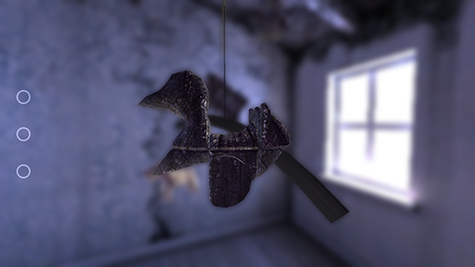Lea Gulino talked about working with voice talent at Casual Connect USA 2014. “You don’t have to be an actor to get caught up in the energy of a scene,” she explained. “Lose your inhibitions. Allow yourself to nod or make eye contact through the glass to the actor. Being able to play around a little bit will create a trust, it will create an engagement and creative sparks will fly.”
Lea Gulino is a voice actor and independent contractor who has watched technology open up many more opportunities in the games industry, especially for newcomers and startups, but notes that with so many people in the pool, it’s easier to drown. So it is essential to find a way to stand out. She feels social media is an accessible and effective way to get the word out, and that, if you commit, you can find an audience. Ultimately, the game must be unique, attractive and engaging, but that becomes increasingly difficult as the community grows and ideas continue to be regurgitated. She emphasizes the need to focus on production values and writing, pointing out that a pro voice actor can help pull it all together.
Many indie developers have never worked with actors before. Gulino is attempting to bridge the gap between the two by attending conferences like Casual Connect, where they can share each other’s processes, strengths, and needs and to invest in each other to produce the best product possible.
Bringing Characters To Life
Gulino is involved in a wide variety of projects. Besides games, she works with audiobooks, training guides, and radio spots. She even is the person you hear saying, “Your call is being recorded for training and quality purposes.”
She says she especially loves gaming session work, bringing characters to life for developers. She has lived in many places and has a theater degree from New York University, so she blends gypsy and thespian approaches, based on her training and travels, when developing characters.
And she loves the variety, not knowing what to expect when she shows up for a session. She could be given two, three, or four different characters, all with different accents and different attitudes; the work is intense, keeping her constantly on her toes. She believes, “There’s no form of acting that offers such diversity in the same day. The closest is probably the theater, which is where I began, so it really takes me back to my roots.”
Lady Liberty
But when considering her very diverse career, she believes the proudest moment was definitely recording the Family Audio Tour for the Statue of Liberty. She lived in New York for many years, and her grandparents came through Ellis Island. She says, “Passing Lady Liberty as they entered New York Harbor must have meant so much to them, marking the end of such a long journey and the beginning of another. It makes me feel good that a little part of me is on that island every day, guiding around thousands of school children.”
Gulino describes herself as a classic casual mobile gamer. She is playing a lot of Dots on her iPhone and jumps around between Tap Tap Revenge, Word Wrap, Moxie, Bejeweled Blitz, and Tilt World. She also admits to being obsessed with last year’s Most Promising Indie winner, Lost Toys. And she tries to get in a few games of Conundra before bed; she claims it is seriously improving her math skills.
Games Go Global
During the next few years, Gulino expects to see the games industry continuing to go global; already incredible developers are found in every corner of the globe. Boundaries are becoming blurred and cultural points of view are blended as like-minded people find each other through social media and international conferences, such as Casual Connect. It is exciting to see these people connect and decide to build a game together, despite living in completely different cities. She has now begun working with agencies based in Amsterdam and London, as well as upgrading her sound system, since she is patching in more and more sessions from her home studio.
Gulino’s home studio is aboard a big old wooden boat that keeps her busy and gives her incredible perspective of the Bay area. She loves the museums and theaters in the region, and also enjoys golf and biking. A special interest is cooking with the fresh organic foods available locally, alleging, “It’s amazing what creations come out of my little galley.”








